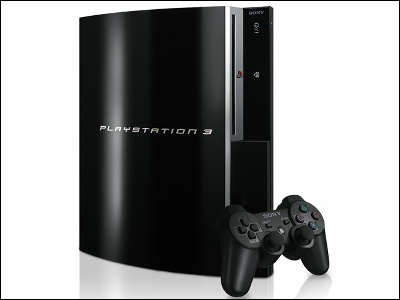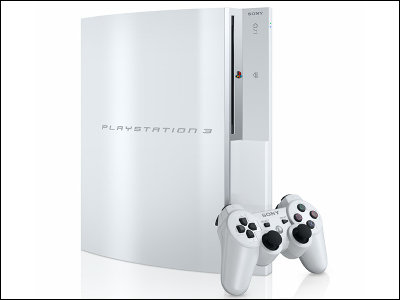The history that PlayStation 3 played an active part in the research field as a 'super computer'

by
The PlayStation 3, released by Sony in 2006, is fully compatible with the Full HD standard, and is the first home console to offer a Blu-ray drive and HDMI. The Verge of technical media explains such PlayStation 3's 'activity as a supercomputer' to commemorate the 25th anniversary of PlayStation.
The rise and fall of the PlayStation supercomputers-The Verge
https://www.theverge.com/2019/12/3/20984028/playstation-supercomputer-ps3-umass-dartmouth-astrophysics-25th-anniversary
PlayStation 3 is famous as a game machine known to have played an active part as a supercomputer, but in fact there have been attempts to build a supercomputer with PlayStation2.
When Sony released the official version of PS2 Linux , a Linux distribution for PlayStation 2, in January 2002, the possibility of being able to play an active role as a supercomputer became real if it was clustered even for home game machines. . The National Supercomputer Application Laboratory (NCSA) of the United States purchased a large amount of PlayStation 2 in 2002 to test its potential. PS2 Linux was introduced, and a project to build a supercomputer on PlayStation 2 was started.
NCSA's senior scientific researcher, Craig Stefan, connected 60 to 70 PlayStation 2s in parallel and created code to build a library. However, there was a technical problem with the memory, and although the parallel connection itself was successful, supercomputing did not go well after all.

by
'Every time we started the computation, the kernel of the machine that ran was in an unstable state and had to be restarted,' said Stefan. As a result, the project to convert PlayStation 2 to a supercomputer was canceled at NCSA. It seems that one of the large number of PlayStation 2 is still kept as a memorial on Stephan's desk.
The PlayStation 3, which was released as a successor to such a PlayStation 2, was equipped with a CPU called the Cell Broadband Engine based on the PowerPC architecture, and was reputed as a very high-performance machine at the time. At the beginning of the release, it was possible to introduce Linux more easily than PlayStation 2.
In fact, PlayStation 3 was able to participate in the world-wide distributed computing project ' Folding @ Home ' and was used to analyze proteins that cause intractable diseases. 1 Peta only PlayStation 3 in 2007 FLOPS achieved, in 2008 has been reported that people who participate from the PlayStation 3 to the Folding @ Home has exceeded 100 million people.
PS3 is very active in intractable disease analysis project `` Folding @ home ''-gigazine

And the PlayStation 3 cluster was expected to be active as a supercomputer. For example, at the University of Massachusetts Dart Mass Campus, a large amount of PlayStation 3 was stored in a refrigerated transport container and operated as a supercomputer.
'Black hole simulation research was considered to have a low social contribution and struggled to secure a budget,' said Gauraf Khanna, a black hole researcher at the University of Massachusetts. However, a researcher who belonged to the same department at the time suggested that `` PlayStation 3's Cell Broadband Engine is excellent and can it be used like a supercomputer? '' Karnna purchased PlayStation 3 himself , Started building a supercomputer.

by
A team of eight people, including Karna, was working on a cluster of PlayStation 3 and it took several months for the code to take shape and another few months for the program to stabilize. Eventually, 176 PlayStation 3s were connected, and simulations of black holes could be performed. Purchasing and running more than 100 PlayStation 3s at the same time seems to be quite expensive, but Mr. Khanna has testified that 'it was only a fraction of the cost of a general supercomputer.'
At the time of article creation, the PlayStation 3 cluster is still operating as a supercomputer for astrophysical research. As expected, it is no longer the mainstay of the project, but this cluster is a popular tour spot on the open campus of the University of Massachusetts.

In 2007, about the same time that Khanna was building a supercomputer for black hole research, a project to supercompute with PlayStation 3 was started at the Air Force Research Laboratory in New York.
U.S. Air Force to procure 300 PS3 for research purpose-gigazine

However, in 2010, when the project finally came into orbit at the US Air Force Research Laboratory, Sony announced that firmware updates would remove the ability to install other operating systems, such as Linux.
Sony removes the ability to install OS such as Linux from the conventional model PS3-gigazine

Following the announcement, the U.S. Air Force negotiated with Sony to sell a PlayStation 3 in stock with no firmware updates. With this, the US Air Force was able to build a 'Condor cluster' connecting more than 1,700 PlayStation 3s. The condor cluster used for image processing of surveillance drones was reported to be the 35th fastest supercomputer in the world in December 2010.
PlayStation 4, which was released as the next-generation PlayStation 3 in 2013, was a game machine with specifications that far exceeded PlayStation 3. However, PlayStation 4 is designed as a machine specialized as a game machine, and it has become very difficult to operate as a supercomputer. 'The PlayStation 4 was nothing new. It's just an ordinary PC. We weren't motivated to do anything with the PlayStation 4.'
Related Posts:






